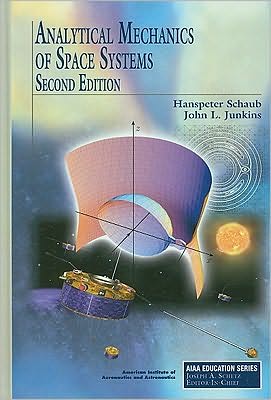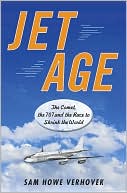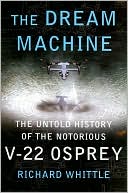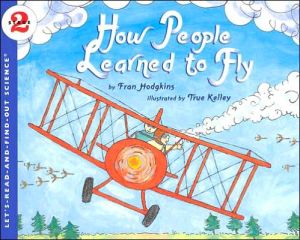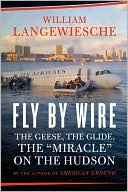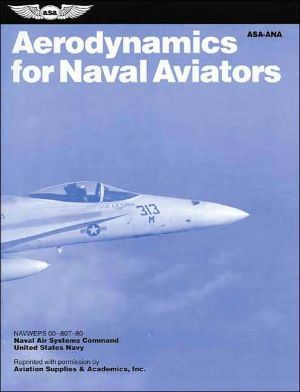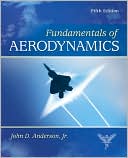Analytical Mechanics of Space Systems, Second Edition
This book provides a comprehensive treatment of dynamics of space systems, starting with the fundamentals and covering topics from basic kinematics and dynamics to more advanced celestial mechanics. All material is presented in a consistent manner, and the reader is guided through the various derivations and proofs in a tutorial way. "Cookbook" formulas are avoided; instead, the reader is led to understand the principles underlying the equations at issue, and shown how to apply them to...
Search in google:
In a textbook that can bridge undergraduate to graduate courses in basic mechanics and celestial mechanics, Schaub (Virginia Polytechnic Institute and State U.) and Junkins (aerospace engineering, Texas A&M U.) blend classic material with new developments. The CD provides a software toolbox for rigid body kinematics routines. AIAA stands for the American Institute of Aeronautics and Astronautics. Annotation ©2003 Book News, Inc., Portland, OR
Preface to the Second Edition xviiPreface to the First Edition xixPart 1 Basic MechanicsChapter 1 Particle Kinematics 31.1 Introduction 31.2 Particle Position Description 31.3 Vector Differentiation 8References 24Problems 24Chapter 2 Newtonian Mechanics 312.1 Introduction 312.2 Newton's Laws 312.3 Single Particle Dynamics 362.4 Dynamics of a System of Particles 482.5 Dynamics of a Continuous System 622.6 Rocket Problem 67References 72Problems 72Chapter 3 Rigid Body Kinematics 793.1 Introduction 793.2 Direction Cosine Matrix 803.3 Euler Angles 863.4 Principal Rotation Vector 953.5 Euler Parameters 1033.6 Classical Rodrigues Parameters 1123.7 Modified Rodrigues Parameters 1173.8 Other Attitude Parameters 1263.9 Homogeneous Transformations 132References 135Problems 136Chapter 4 Kulerian Mechanics 1434.1 Introduction 1434.2 Rigid Body Dynamics 1434.3 Torque-Free Rigid Body Rotation 1624.4 Dual-Spin Spacecraft 1724.5 Momentum Exchange Devices 1784.6 Gravity Gradient Satellite 188References 198Problems 199Chapter 5 Generalized Methods of Analytical Dynamics 2075.1 Introduction 2075.2 Generalized Coordinates 2075.3 D'Alembert's Principle 2105.4 Lagrangian Dynamics 2395.5 Quasi Coordinates 2635.6 Cyclic Coordinates 2725.7 Final Observations 280References 281Problems 281Chapter 6 Variational Methods in Analytical Dynamics 2896.1 Introduction 2896.2 Fundamentals of Variational Calculus 2896.3 Hamilton's Variational Principles 2936.4 Hamilton's Principal Function 2986.5 Some Classical Applications of Hamilton's Principle to DistributedParameter Systems 3006.6 Explicit Generalizations of Lagrange's Equations for Hybrid Coordinate Systems 309References 317Problems 317Chapter 7 Hamilton's Generalized Formulations of Analytical Dynamics 3217.1 Introduction 3217.2 Hamittonian Function 3217.3 Relationship of Hamiltonian Function to Work/Energy Integral 3267.4 Hamilton's Canonical Equations 3317.5 Poisson's Brackets 3357.6 Canonical Coordinate Transformations 3387.7 Perfect Differential Criterion for Canonical Transformations 3427.8 Transformation Jacobian Perspective on Canonical Transformations 345References 347Problems 347Chapter 8 Nonlinear Spacecraft Stability and Control 3518.1 Introduction 3518.2 Nonlinear Stability Analysis 3518.3 Generating Lyapunov Functions 3668.4 Nonlinear Feedback Control Laws 3818.5 Lyapunov Optimal Control Laws 3968.6 Linear Closed-Loop Dynamics 4028.7 Reaction Wheel Control Devices 4088.8 Variable Speed Control Moment Gyroscopes 410References 430Problems 432Part 2 Celestial MechanicsChapter 9 Classical Two-Body Problem 4399.1 Introduction 4399.2 Geometry of Conic Sections 4409.3 Coordinate Systems 4489.4 Relative Two-Body Equations of Motion 4559.5 Fundamental Integrals 4599.6 Classical Solutions 470References 487Problems 487Chapter 10 Restricted Three-Body Problem 49310.1 Introduction 49310.2 Lagrange's Three-Body Solution 49310.3 Circular Restricted Three-Body Problem 50810.4 Periodic Stationary Orbits 52810.5 Disturbing Function 529References 533Problems 533Chapter 11 Gravitational Potential Field Models 53711.1 Introduction 53711.2 Gravitational Potential of Finite Bodies 53811.3 MacCullagh's Approximation 54111.4 Spherical Harmonic Gravity Potential 54511.5 Multibody Gravitational Acceleration 55511.6 Spheres of Gravitational Influence 557References 560Problems 560Chapter 12 Perturbation Methods 56112.1 Introduction 56112.2 Encke's Method 56212.3 Variation of Parameters 56412.4 State Transition and Sensitivity Matrix 597References 612Problems 613Chapter 13 Transfer Orbits 61713.1 Introduction 61713.2 Minimum Energy Orbit 61713.3 Hohmann Transfer Orbit 62113.4 Lambert's Problem 62613.5 Rotating the Orbit Plane 63913.6 Patched-Conic Orbit Solution 643References 667Problems 667Chapter 14 Spacecraft Formation Flying 67314.1 Introduction 67314.2 General Relative Orbit Description 67414.3 Cartesian Coordinate Description 67614.4 Orbit Element Difference Description 68414.5 Relative Motion State Transition Matrix 69314.6 Linearized Relative Orbit Motion 69814.7 J2-Invariant Relative Orbits 70814.8 Relative Orbit Control Methods 729References 749Problems 751Appendix A Transport Theorem Derivation Using Linear Algebra 755Appendix B Various Euler Angle Transformations 759Appendix C MRP Identity Proof 763Appendix D Conic Section Transformations 765Appendix E Numerical Subroutines Library 769Appendix F First-Order Mapping Between Mean and Osculating Orbit Elements 775Appendix G Direct Linear Mapping Between Cartesian Hill Frame Coordinates and Orbit Element Differences 779Appendix H Hamel Coefficients for the Rotational Morion of a Rigid Body 781Index 789Supporting Materials 794
